Introduce yourself to the person
Identify yourself when you approach a person and speak directly to them.
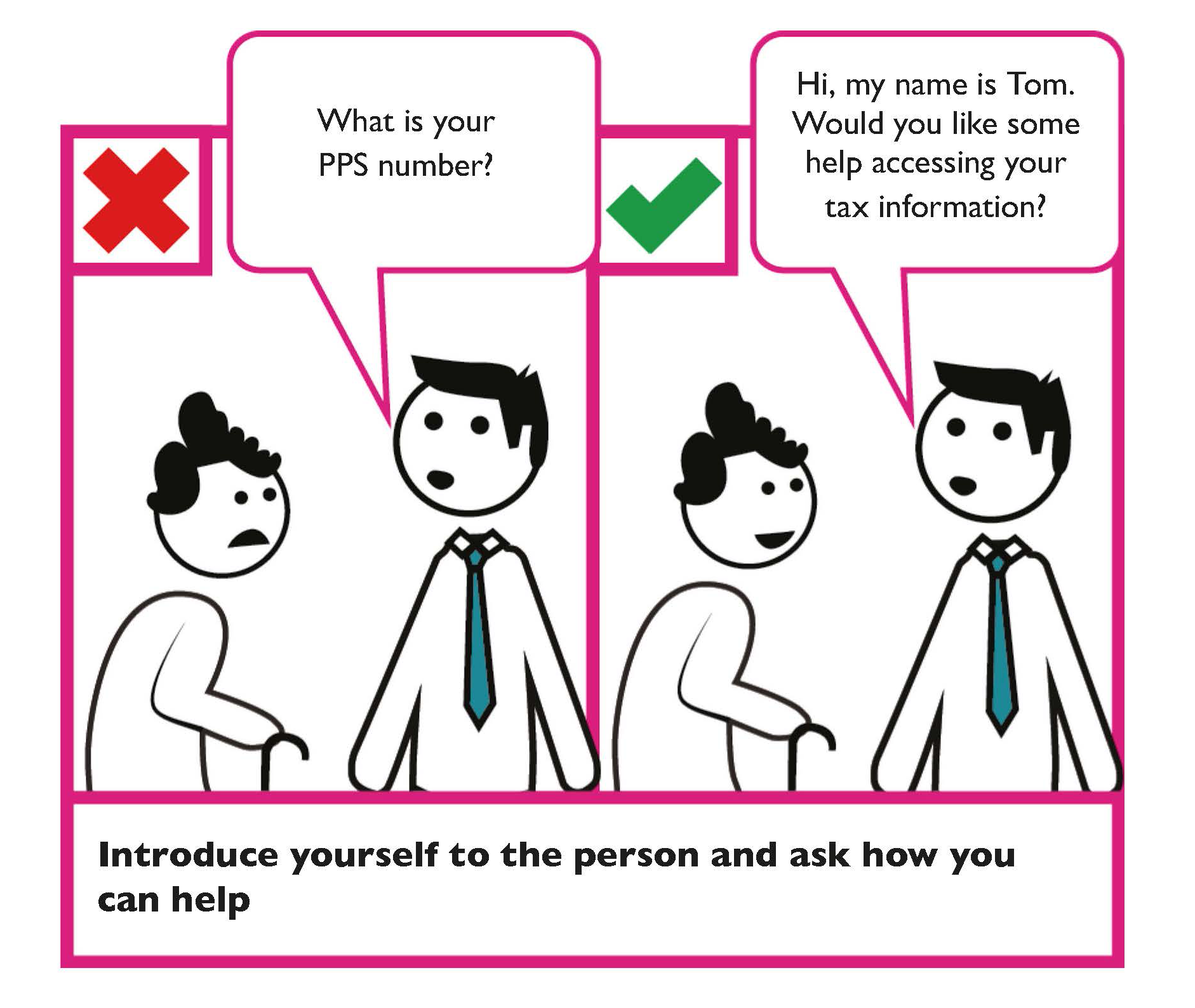
Consider alternative means of communication
Consider whether the person may want to communicate using alternative means and ask them; for example, a person may wish to communicate using notes.
Use plain English
Always use the simplest and clearest language possible. Avoid using technical words that may not be used by a member of the public. If you must use technical language, clearly explain what it means.
Keep your message simple
State one piece of information at a time. Provide the information in a logical order.
Speak clearly
Speak in a clear voice, clearly pronouncing your words.
Speak slowly
Take your time and speak slowly to the person. Tailor what you are saying to meet the person’s needs.
State the purpose of your conversation
At the start of your conversation, state the purpose of it.
Listen and respond to the person
Be aware of the language the person uses and their literacy level. In Ireland 18% of adults have literacy and numeracy difficulties.
Don’t finish a person’s sentences
Do not interrupt a person while they are speaking. Patiently wait for them to finish. Customers with some disabilities may take a little longer to understand and respond.
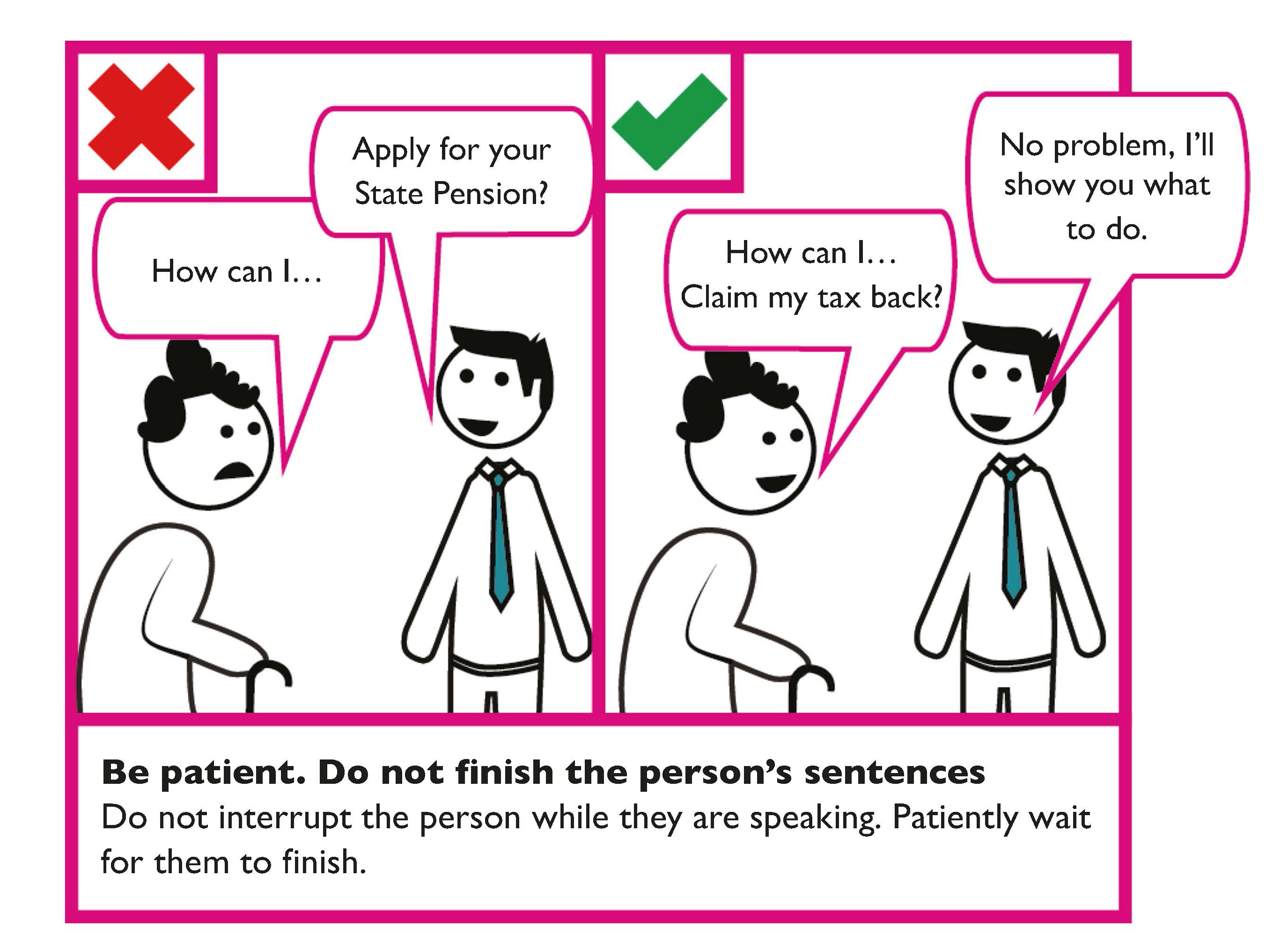
If you’re not sure what was said, politely ask the person to repeat the information
Alternatively, summarise the information back to the person to check you have correctly understood the request.
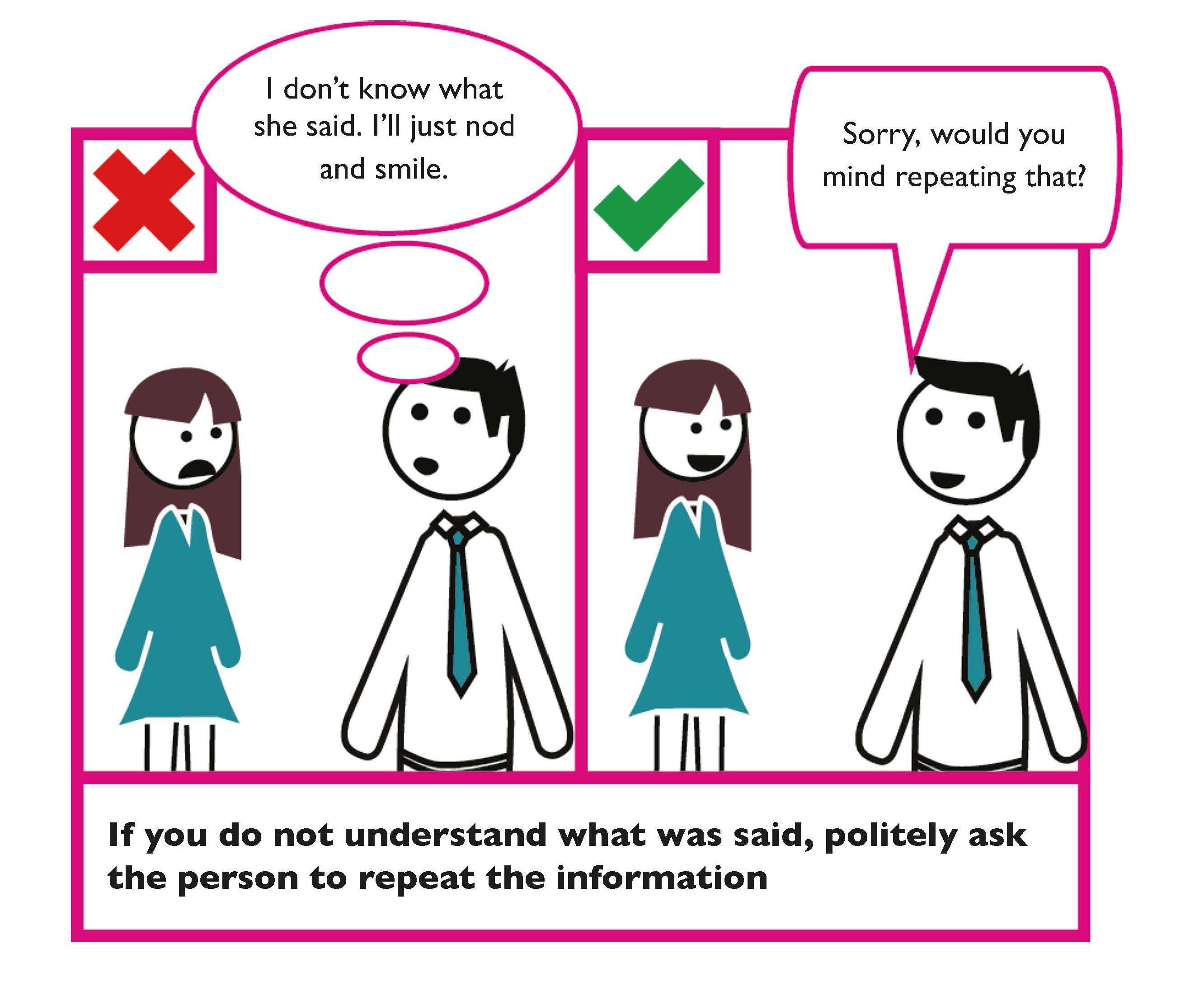
Think about what you are saying
Are you answering the person’s questions?
Are members of the public familiar with the technical terms your organisation uses?
Open-ended and closed questions
Use open-ended questions to gain more information. Open-ended questions typically provide more informative answers. For example, “What questions do you have?”
Closed questions generally only provide yes or no answers. For example, “Is that your answer?”
Provide dedicated employees to help
Where possible, and if appropriate, have specifically trained employees to deal with members of the public who require extra time.
Questions and answers can provide a good way of finding out if a person has understood the information.
Find a way of communicating that works for the person
For example, keep a pen and paper handy to write information down if necessary. Alternatively, provide images that may help get your message across.
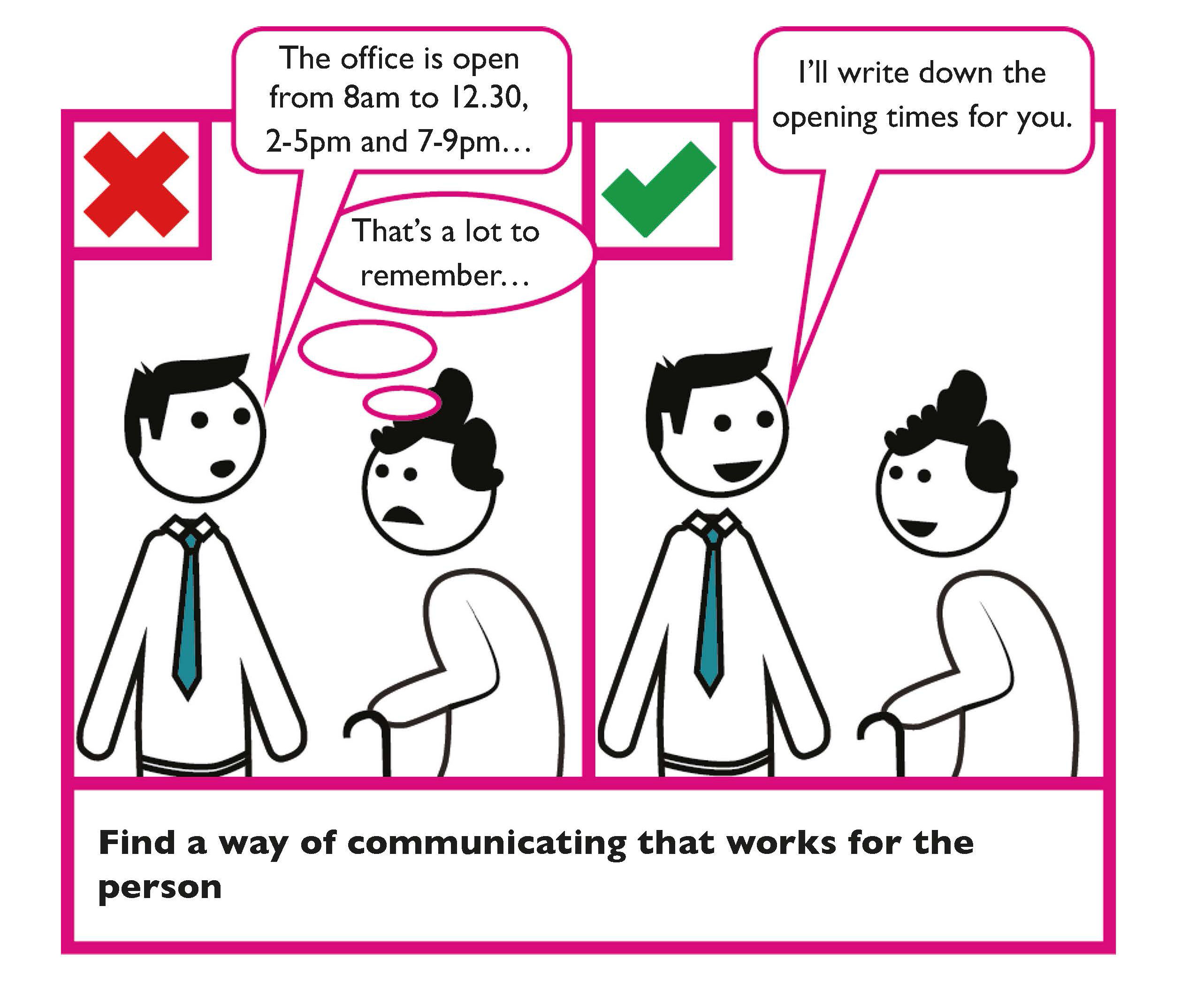
Keep background noise to a minimum
Try to speak in an area with few competing sounds. This is particularly important for persons with autism and for the one in seven members of the public who has some level of hearing loss.
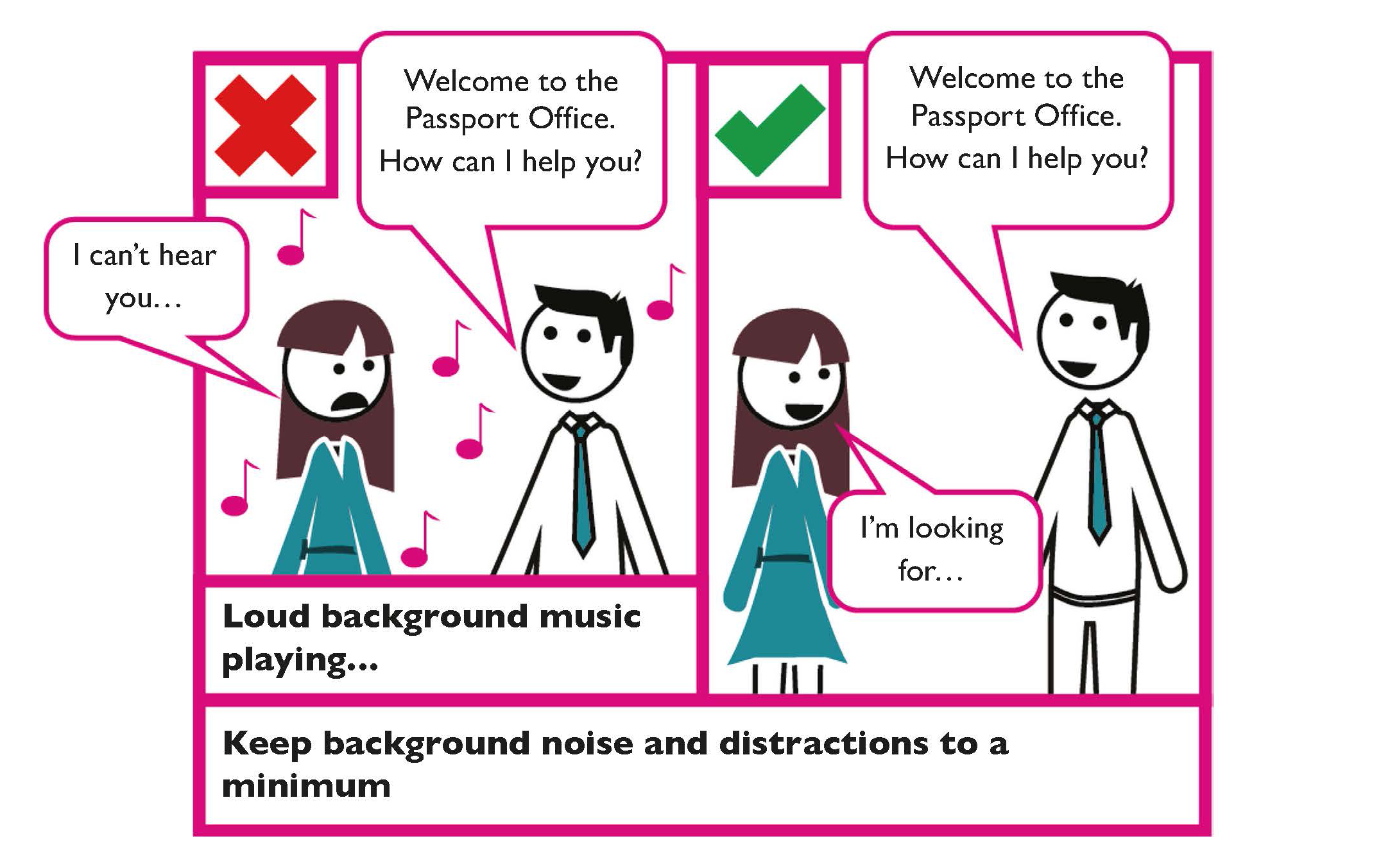
Use alternative ways to communicate
To accommodate different languages, where appropriate, offer information using non-spoken forms of communication; such as sign language, universal symbols, translation software or phrase books.
Finish the conversation by saying thank you and good-bye
Tips
Consider the following guidance on communicating with persons with disabilities.
- Some disabilities are not visible. Take the time to get to know the customer’s needs.
- Be patient. Persons with some kinds of disabilities may take a little longer to understand and respond.
- Identify yourself if you approach a customer with a visual impairment. Don’t walk away without saying goodbye.
- Do not touch service animals such as assistance dogs. They are working and have to pay attention at all times.
- If the customer has an intellectual disability, give one piece of information at a time. Use plain words and short sentences.
Spoken and Signed Communication Checklist
- At the start of a conversation, introduce yourself.
- Consider alternative means of presentation.
- Use plain English.
- Keep your message simple.
- Speak clearly and slowly.
- Listen first and then respond to the person.
- Do not finish the person’s sentences.
- If you do not understand what a person has said, politely ask the person to repeat the information.
- Make sure the person understands what you have said.
- Keep background noise to a minimum.
- Finish the conversation by saying thank you and good-bye.
